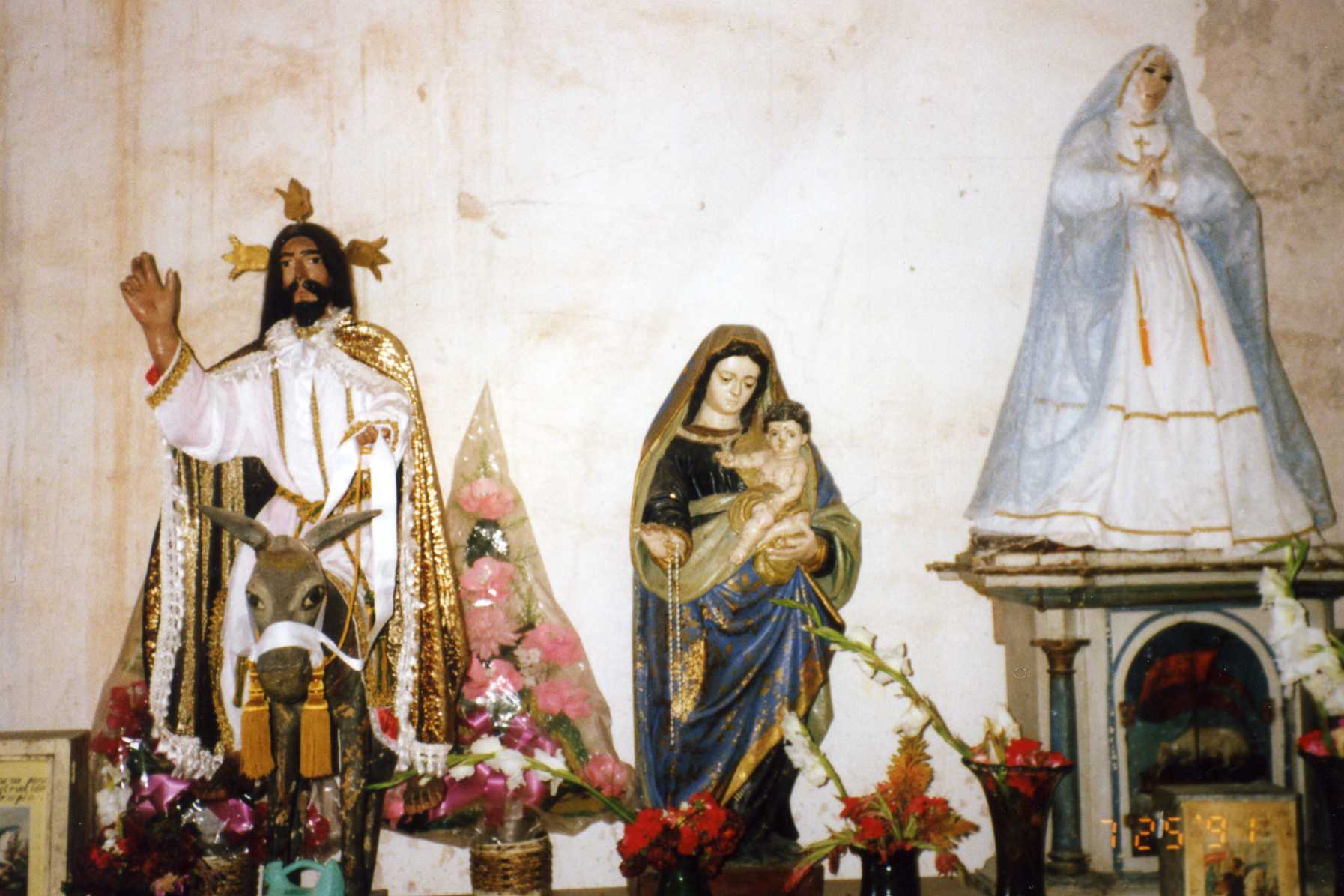Holy Week Group
Site: Church of Santiago Tilantongo.
Location: On a table
in the first bay of the north wall of the nave
(see note).
Palm
Sunday Christ
Basis for Identification: Ass,
cruciform halo.
Other characteristics: White robe,
gold mantle, gold rein.
Comparable santos in Oaxaca: Santa Ana del
Valle, Cuilapan,
Mitla, Ocotlán, Díaz
Ordaz, Tamazulapan,
Teitipac,
Teotitlán,
Teposcolula,
Tlacolula,
Yanhuitlán.
External Link:
Metropolitan
Museum Art: Palmesel
Our
Lady of the Rosary
Basis for Identification: Blue robe,
Christ Child in left arm, rosary hanging from right
hand.
Other characteristics: Tan veil.
Site: Church of Santiago Tilantongo.
Comparable santos in Oaxaca: Achiutla,
Coixtlahuaca,
Cuilapan,
Teitipac1,
Teitipac2,
Teotitlán, Teposcolula,
Xoxocotlán.
External Links:
Wikimedia Commons:
Statues
of
Our Lady of the Rosary in Mexico
Wikipedia: Our
Lady of the Rosary
Christian Iconography: Our
Lady
of the Rosary
Our
Lady of Sorrows
Local Name: La Madre de los Dolores.
Basis for Identification: Praying
hands, uplifted eyes, blue mantle.
Other characteristics: Cross on
chest.
Comparable santos in Oaxaca: Achiutla,
Santa Ana del
Valle, Coixtlahuaca,
Cuilapan1,
Cuilapan2,
Ejutla, Mitla, Nochixtlán,
Ocotlán, Díaz
Ordaz, Tamazulapan,
Teitipac,
Teotitlán, Teposcolula
(in Calvary group), Tlacolula,
Xoxocotlán, Yanhuitlán (?).
External Links:
Wikimedia Commons:
Mater
dolorosa
Wikipedia: Our
Lady of Sorrows
Christian Iconography: Mater
Dolorosa,
The Sorrowful Mother
Next: Moving to the transept (see
note) we find an "Ecce
Homo" santo.
Previous santo
Introduction
to Tilantongo
Santos Home Page
Note: On
this
site,
references to the cardinal directions always assume
that the main altar is at the east end of the church,
the narthex or entry area at the west end, and the two
walls
of the nave on the
north and south. (The
nave is the long central section.)
Actual
orientations may differ. The
"transept" is the part of the building that crosses
the nave so that the whole building has the shape of a
cross.
The photo shown here is licensed under the
Creative Commons Attribution-Share Alike 3.0 Unported
license. You are free to share or remix it on two
conditions: first, that you attribute it to the
photographers, Claire and Richard Stracke, without
implying any approval of your work on their part;
second, that if you alter, transform, or build upon
this photo, you may distribute the resulting work only
under the same or similar license to this one.
|


